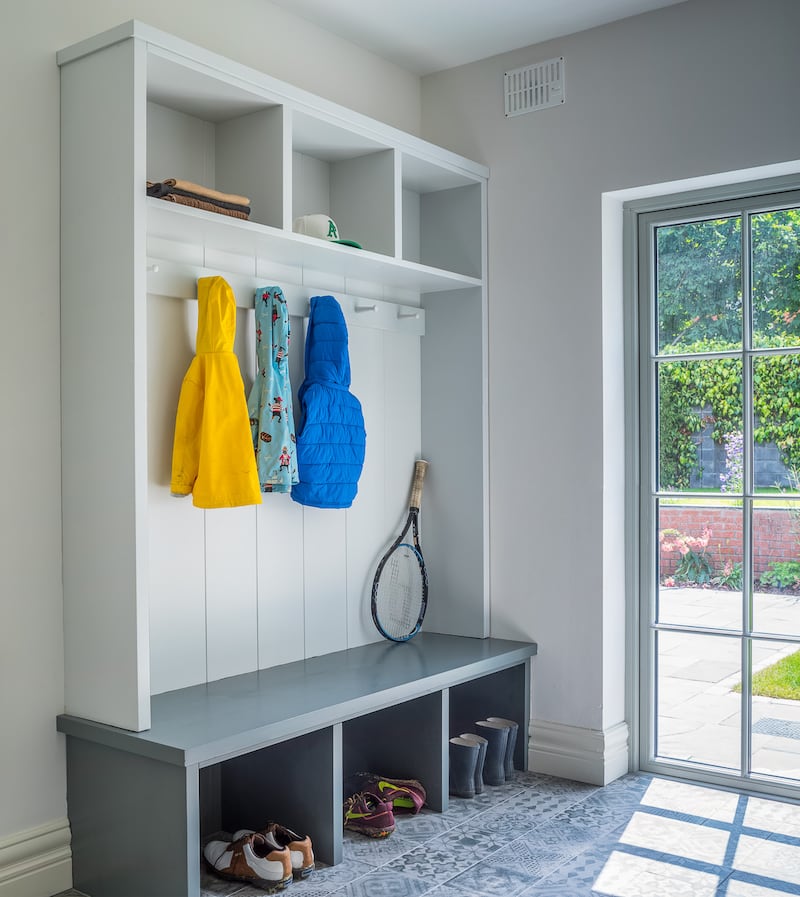It may be one of the smallest spaces in the home, but the humble utility room has had a major glow-up in recent years. No longer relegated to a dark corner of the house or an afterthought tacked on behind the kitchen, this multifunctional space is now a design showpiece in its own right. It often becomes one of the rooms homeowners are most proud to show off to visitors after completing a full house renovation. Here are some things to consider to help you create a space that functions brilliantly and looks fabulous, turning a utilitarian workhorse into a hidden gem in your home.
With homeowners demanding more from their spaces, the utility room has taken on a new role, not just as a place to hide chores but as a zone that enhances the flow of daily life.
The focus on order and efficiency has made the utility room a place where everything has its place, adding value both practically and aesthetically. Beyond just housing washing machines and detergents, today’s utility rooms are designed to streamline laundry, cleaning and even pet care. This shift has led to a rethinking of what the perfect utility room should look and feel like. These humble little spaces are now getting as much design attention as kitchens and living areas, with clever layouts, custom cabinetry, and a touch of luxury.
Layout
The first step to planning your dream utility room is getting the layout right. Think about what you need from the space. Is it primarily for laundry or does it need to double as an overflow storage area for the kitchen, a mudroom or a pet-washing area? Having a clear understanding of its function will help you decide how to organise the space effectively.
A New Zealander in Dublin: ‘It feels like people work to live here as opposed to living to work’
Family fallouts: ‘I can’t describe the heartache of not having a relationship with my sister’
Zach Bryan in Dublin review: Gen Z’s Garth Brooks puts on a charming – and lengthy – show
How the death of an ‘old boy from Ireland’ in London-Irish suburb sparked a misguided viral appeal
Create distinct zones for each activity. Ideally, a utility room should be directly accessible from the kitchen or through a side passage to the garden, making it easy to transport laundry in and out. Even if the space is tight, clever zoning can separate laundry functions from general storage, or create a mudroom area for outdoor shoes and sports gear.

Maximise space
The key to success isn’t necessarily having a huge space, but making every inch work. A width of 600mm/650mm (the depth of a standard appliance) plus enough walkway space, ideally 1000mm, giving a total of 1600/1650mm, is the minimum width for a utility room.
When positioning appliances, ensure there’s enough clearance to pull them out if they need maintenance. For washers and dryers, a good ergonomic tip is to raise them off the floor so you do not have to stoop to do laundry. You can then add a pull-out shelf below each machine to catch washing or freshly dried clothes and, below that again, a drawer for collecting dirty laundry. If space allows, include counter space to use as a folding station.
[ Got a small kitchen? Here’s how to maximise every inch of spaceOpens in new window ]
Where possible, opt for a run of full-height cabinets to store brooms, mops, and even the ironing board. To make the most of your space, try to get as much of your stuff up off the floor as possible. Things like drying apparatus can be hung up on the wall or back of doors, freeing up valuable floor space. Integrate custom shelving for kitchen overflow items that you don’t need cluttering up the kitchen.
Features
Once the basics are in place, it’s time to think about some little extras that can take your utility room to the next level.
If you’re planning a larger renovation project, consider installing a laundry chute. This clever little addition will let you transport dirty clothes from the upper floors directly to the utility room, making laundry days much more manageable.
[ Where to spend and where to save when renovating your homeOpens in new window ]
Another feature worth considering is underfloor heating, which not only warms the space but also significantly speeds up clothes drying, particularly during winter when outdoor drying isn’t an option. Other advanced drying solutions, such as pull-out drying racks, heated drying cabinets, or even a built-in dehumidifier, can make laundry a breeze.
Combining the space with a mudroom is a fantastic way to remove dirt and clutter from the main living areas. Include built-in benches with shoe storage underneath, hooks for coats and bags, and even a dedicated space for umbrellas, sports equipment and outdoor gear. If you have the space, consider incorporating a lower-height shower for washing pets or muddy boots.
Design tips
When it comes to design, the utility room should feel like an extension of the rest of your home. Pay attention to the details that will elevate it from purely functional to fantastic.
Choose materials that are as practical as they are beautiful. Worktops should be robust and easy to clean. Think quartz or high-quality laminate. For flooring, opt for hard-wearing tiles that can withstand heavy foot traffic and frequent spills.
Good lighting is crucial in a utility room, where many detailed tasks are carried out. Use bright ceiling spots or LED strips under wall units for general illumination.
Finally, the devil is in the details. Use decorative finishes like tongue-and-groove wall panelling, painted in rich hues, to add texture and warmth. Consider adding a feature wallpaper and even some decorative wall lights to create a room that feels just as curated as the rest of your home.













